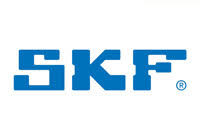Vibration dampers
Four-stroke piston engines exhibit non-uniform rotation. The separate strokes (suction, compression, power, exhaust) combined with the firing order of the individual cylinders dictate that the crankshaft is...
Function
Four-stroke piston engines exhibit non-uniform rotation. The separate strokes (suction, compression, power, exhaust) combined with the firing order of the individual cylinders dictate that the crankshaft is continuously accelerated and decelerated. Torsional vibration dampers, or rotation vibration dampers , as they are also known, must damp these rotational irregularities and vibrations of the crankshaft so that they are not passed on to the belt drive system. They are screw-mounted directly on the crankshaft and fitted with a special damping device (inertia ring, plain bearing, rubber bearing). It is via the damping device that the connection to the V-ribbed belt pulley is established to drive the ancillary components (alternator, hydraulic pump for the power steering, air conditioning compressor, fan, water pump).
Safety
A rotation vibration damper that is perfect working order can be relied upon to isolate vibration in the ancillary component drive. As a result, the belt drive runs smoothly. Vibration and oscillation noise is damped and not transmitted to the vehicle structure, where it would be perceived by the driver and passengers as inconvenient and unpleasant. At the same time, the rotation vibration damper reduces wear of the V-ribbed belt and extends the service life of the units and belt drive components it is responsible for driving.
Depreciation
Rotation vibration dampers are exposed to high levels of stress and strain. Worn rotation vibration dampers usually make themselves felt in the form of increased engine noise and vibrations which impair ride comfort. Rotation vibration dampers should be inspected after approx. 90,000 km and replaced if necessary. Compliance with service and replacement intervals will ensure that they continue to function as intended and counteract increased wear to the V-ribbed belt, belt tensioner, belt pulleys and the alternator freewheel, if one has been installed. Premature malfunctions, breakdowns or even major engine damage can thus be avoided.
Environmental protection
The rotation vibration damper protects the belt drive components and ancillary components against premature wear. In so doing it increases their life (mileage) and makes an important contribution to the preservation of resources.





